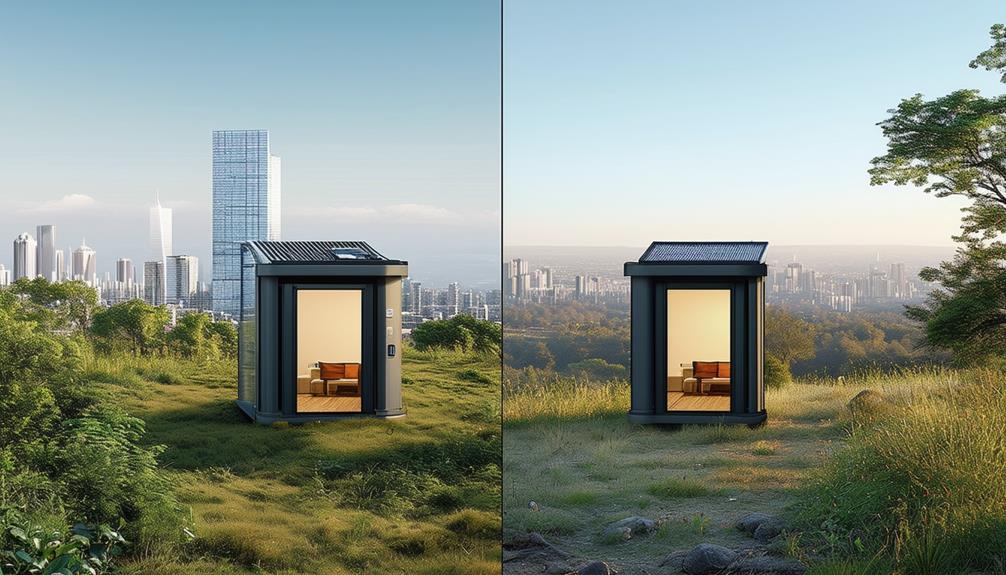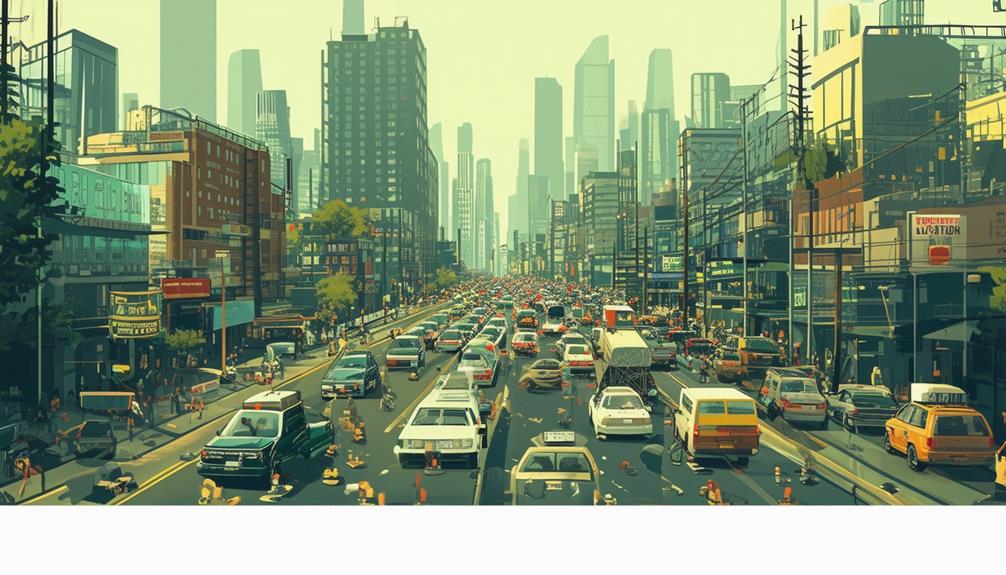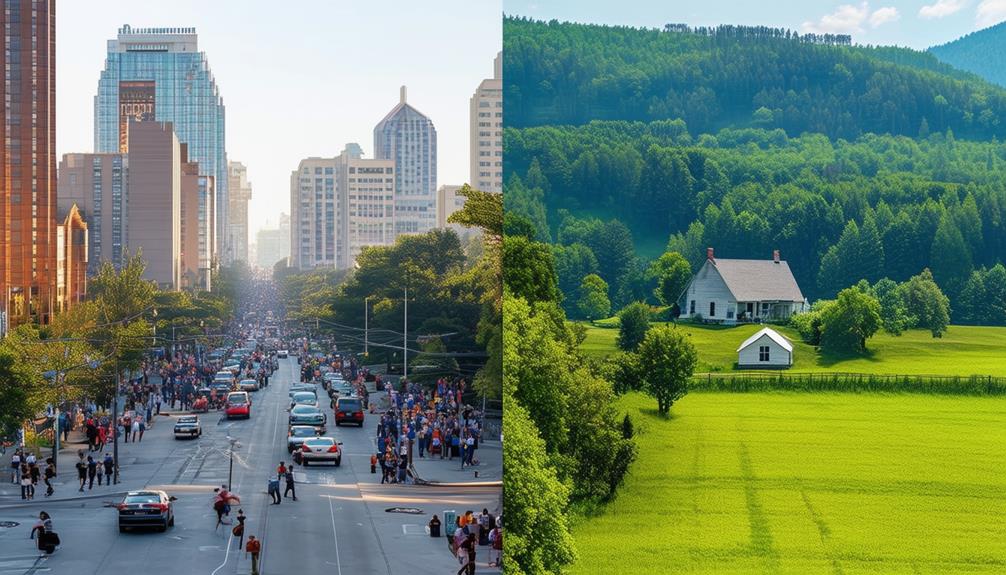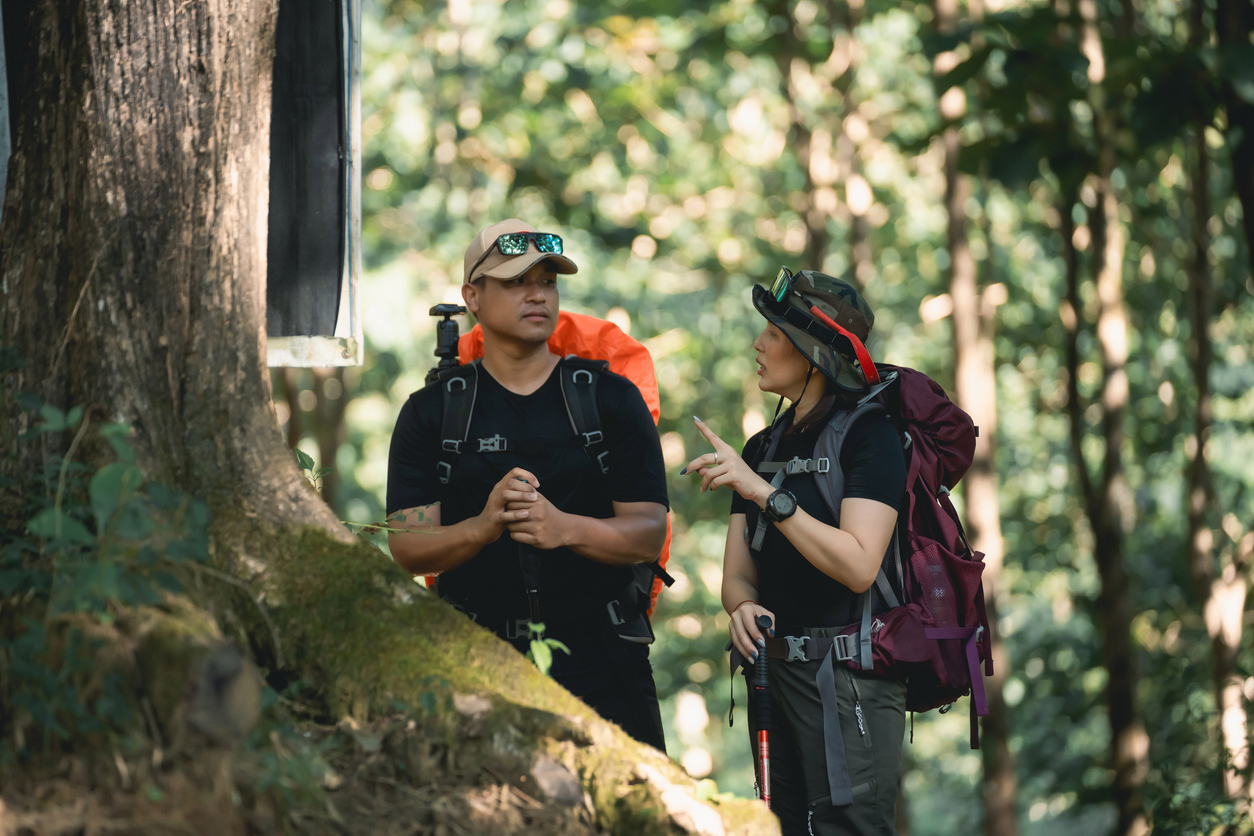Urban Vs. Rural Bug Out Locations: Pros and Cons

When evaluating urban versus rural bug out locations, each has distinct advantages and drawbacks. Urban areas offer immediate access to essential resources and developed infrastructure but can lack privacy and are more susceptible to civil unrest.
On the other hand, rural areas provide seclusion and opportunities for self-sufficiency with abundant natural resources, yet they often lack emergency services and readily available supplies. Which location aligns best with your survival strategy?
Overview of Bug Out Locations

When selecting a bug out location, it's essential to understand the distinct advantages and challenges of both urban and rural settings. Urban areas offer the benefit of close proximity to resources such as food, medical facilities, and emergency services, which can be lifesaving if you require medical attention or quick supplies. Additionally, urban settings often house vital documents and personal records, making them easier to retrieve if needed.
However, urban areas also present significant challenges. Congestion can impede quick movement and limit available space. The high population density increases competition for resources, leading to potential conflicts and a higher risk of crime during emergencies.
In contrast, rural locations offer seclusion and lower population density, enhancing safety and sustainability. The abundance of natural resources like water and firewood supports long-term survival. Yet, rural areas lack immediate access to medical facilities, supplies, and reliable communication infrastructure, which are crucial during a crisis.
Urban Location Advantages
Urban locations offer many advantages, particularly due to their proximity to essential resources such as hospitals, stores, and emergency services. In an emergency, quick access to medical care can be life-saving, especially if immediate attention is required. The availability of stores allows for rapid restocking of crucial supplies, including food, water, and medical items.
Urban areas also provide robust infrastructure, making sheltering in place more feasible. Reliable communication networks ensure that you stay informed and connected. Public transportation options can facilitate swift evacuations if the situation deteriorates, providing convenient escape routes.
Another significant advantage of urban settings is the potential for community support. The higher population density means more people are available to assist, creating safety in numbers. Collaboration with neighbors and local organizations can help in sharing resources and information, enhancing overall survival strategies. Urban areas are also equipped with emergency services and shelters designed to offer safety and support, making them advantageous locations in times of crisis.
Urban Location Disadvantages

Urban bug-out locations often lack the privacy and seclusion necessary for maintaining a low profile during emergencies. High population density means you're constantly surrounded by people, making it difficult to avoid detection, which can compromise your safety and security.
Access to resources like clean water and food in urban areas can be severely limited. During a crisis, stores can be quickly emptied, making it challenging to locate and secure crucial supplies. Additionally, urban environments typically lack the space needed for gardening or raising livestock, complicating efforts toward self-sustainability.
Security is another major concern in urban bug-out locations. The higher risk of civil unrest, looting, and violence can quickly turn a city into a dangerous place. Securing your location against potential threats and intruders can be a challenging task. Urban settings are more vulnerable to break-ins and theft, making it difficult to protect your assets and ensure your safety.
Rural Location Advantages
Opting for a rural bug-out location offers substantial benefits that can significantly enhance your survival prospects during emergencies. One primary advantage is the seclusion and privacy it offers. In a rural area, the likelihood of encountering others is reduced, thereby minimizing risks of conflicts and competition for resources during natural disasters.
Another significant benefit is access to natural resources. Rural regions typically feature abundant forests, water sources, and wildlife, which are essential for sustenance and survival. Activities like hunting, fishing, and gathering become more viable, ensuring a reliable food supply.
The lower population density in rural areas also reduces the risk of overcrowding, a critical factor during emergencies. With fewer people around, there's less chance of depleted supplies or overwhelmed public services.
Rural environments also foster self-sufficiency. You can engage in farming, gardening, and raising livestock, which ensures a continuous food supply. This self-reliance not only boosts your independence but also improves your long-term survival prospects. Lastly, the serene surroundings of rural bug-out locations can enhance your mental well-being. During stressful times, a calm environment can help you stay focused and make better decisions.
Rural Location Disadvantages

In a rural bug-out location, you might struggle with limited access to emergency services and medical facilities, making it harder to get help when needed. Isolation and inaccessibility can pose challenges for communication and transportation. Additionally, resource scarcity necessitates greater self-sufficiency and preparedness for long-term survival.
Limited Emergency Services
Rural bug out locations often face limited access to emergency services, posing challenges for quick medical or firefighting assistance. If you're considering such a location, it's crucial to understand these implications.
In rural areas, emergency services like fire departments or hospitals aren't always nearby, leading to longer response times during crises. Unlike urban centers, rural locations typically have fewer resources and personnel available for handling emergencies, increasing your need for self-reliance.
Here are three critical points to keep in mind:
- Longer Response Times: In an emergency, every second counts. Rural areas can experience significantly extended waits for help, which could be life-threatening.
- Scarce Resources: Rural locations often have limited medical facilities and fire stations, meaning fewer professionals are available to address emergencies.
- Increased Self-Reliance: You must be prepared to handle emergencies yourself. This means having a well-stocked first aid kit, fire extinguishers, and possibly training in basic medical and firefighting techniques.
Isolation and Inaccessibility
Many rural bug-out locations suffer from isolation and inaccessibility, complicating the acquisition of necessary supplies and services during emergencies. Choosing to shelter in place in a remote rural area can present significant challenges due to limited road infrastructure. Unpaved roads, narrow pathways, and long distances from urban centers can impede travel, especially during adverse weather conditions or natural disasters.
Furthermore, the isolation of rural locations often means that emergency services are far away and slower to respond. In the event of a medical emergency or urgent need for assistance, delayed response times can be critical. Ambulances, fire trucks, and other emergency response teams may struggle to reach you promptly, increasing the risks associated with your bug-out plan.
Additionally, the scarcity of nearby amenities such as grocery stores, hospitals, and reliable communication services can hinder your ability to thrive during a crisis. Inaccessible public transportation further complicates matters, making you more reliant on personal vehicles and fuel, which may not always be available. The necessity for self-sufficiency in food production, water sources, and security measures becomes paramount, underscoring the significant disadvantages of choosing a rural bug-out location.
Resource Scarcity
While isolation and inaccessibility pose considerable challenges, the scarcity of resources in rural bug-out locations further complicates survival during emergencies. Living in a rural area means you'll likely face resource scarcity due to limited access to stores, hospitals, and emergency services. This can be a significant disadvantage when you need essential resources quickly.
Food and Water:
- Rural locations often require self-sufficiency in food production and water sourcing. If unprepared, securing adequate food and clean water can become a struggle.
Medical Supplies:
- Obtaining medical supplies during emergencies can be a major hurdle. Limited access to hospitals and pharmacies necessitates stockpiling essential medical items in advance.
Infrastructure:
- The scarcity of nearby infrastructure, such as stores and transportation networks, complicates the acquisition of essential resources. Careful planning and stockpiling are crucial for long-term sustainability.
Given these challenges, extensive preparation is essential if you choose a rural bug-out location. Stockpiling, developing self-sufficiency skills, and planning for the long term are vital steps to mitigate the disadvantages posed by resource scarcity.
Key Decision Factors
When selecting your bug-out location, consider factors such as accessibility, infrastructure, resource availability, security, and privacy. Urban areas generally offer better infrastructure and access to resources, whereas rural locations provide greater privacy and access to natural resources. Evaluate what's most critical for your specific situation to make the most informed decision.
Accessibility and Infrastructure
Choosing between urban and rural bug-out locations significantly depends on the accessibility and infrastructure each setting offers. Urban areas provide easier access to resources and services like hospitals, stores, and public transportation, ensuring quick emergency response during crises.
Conversely, rural areas often lack such infrastructure, necessitating greater self-sufficiency. You may need to generate your power, secure your water supply, and stockpile essential supplies. While this can be challenging, it offers increased seclusion and space for activities such as farming and hunting.
Consider these three factors when evaluating accessibility and infrastructure:
- Proximity to Services: Urban locations offer immediate access to medical facilities, emergency response teams, and essential services. In contrast, rural areas may leave you isolated and far from critical help.
- Self-Sufficiency: Rural settings require higher levels of self-reliance, necessitating the management of your utilities and resources.
- Population Density: Urban areas can become crowded, leading to competition for limited resources, whereas rural locations offer more space but fewer readily available amenities.
Understanding these aspects will help you make an informed decision on your ideal bug-out spot.
Resource Availability
Evaluating resource availability is crucial when selecting between urban and rural bug-out locations. Urban areas provide immediate access to stores, hospitals, and emergency services, which can be lifesaving in a crisis. However, these areas often experience resource scarcity and intense competition during emergencies, leading to risky situations where supplies may run out quickly.
Conversely, rural bug-out locations offer access to natural resources such as water, wood, and wildlife, which can provide long-term sustenance and greater self-sufficiency. However, relying on these resources requires skills and knowledge, and rural areas often lack the infrastructure and amenities of urban settings, making emergency services less accessible.
When choosing your bug-out location, consider the availability and proximity of key resources, potential hazards, and your ability to adapt to either environment. Weigh the immediate convenience of urban resources against the long-term sustainability offered by rural natural resources.
Security and Privacy
When deciding between urban and rural bug-out locations, security and privacy are critical factors. Rural areas generally offer greater privacy and security due to lower population density and seclusion, making them less likely to attract unwanted attention and easier to defend.
Conversely, urban areas may provide quicker access to resources but often come with heightened privacy concerns and security risks.
Key considerations include:
- Proximity to Threats: Urban locations are closer to potential threats like civil unrest, looting, and higher crime rates. Rural areas, being more isolated, reduce these risks but may be harder to reach during emergencies.
- Ease of Surveillance: Cities have high visibility and limited space, making it difficult to stay unnoticed. Rural locations offer better concealment and easier monitoring of surroundings, enhancing security.
- Defensibility: Urban environments are challenging to secure due to crowded conditions and numerous entry points. In contrast, rural properties, with fewer access routes and natural barriers, are generally easier to defend.
Emergency Preparedness Tips

When preparing for emergencies, evaluate both urban and rural bug-out locations to enhance your chances of survival and safety. The Red Cross emphasizes comprehensive emergency preparedness, which includes weighing the pros and cons of your chosen bug-out locations.
Urban areas offer proximity to resources and services, but higher population density and competition for supplies can lead to civil unrest and crime. Thus, having a robust plan for safety and resource management is essential.
Conversely, rural bug-out locations provide seclusion, self-sustainability, and access to natural resources. You can set up off-grid systems and have ample space for farming and hunting. However, rural areas may lack immediate access to medical facilities and strong infrastructure, making a complete first-aid kit and basic medical knowledge crucial.
For urban locations, ensure you have a reliable communication network and a transportation plan. Stock up on necessities but remain prepared for potential threats. In rural areas, focus on self-sufficiency and privacy. Both settings require tailored emergency plans that address your specific needs and circumstances. By thoroughly preparing, you'll be ready to face emergencies, regardless of your location.
Final Thoughts
The decision between an urban or rural bug-out location depends on a thorough evaluation of your personal needs, skills, and anticipated emergencies. Weighing the pros and cons is essential for making an informed choice that ensures your safety and well-being.
For an urban bug-out location, consider:
- Proximity to Resources: Immediate access to medical services, food supplies, and other necessities.
- Limited Space: Smaller living spaces and a higher likelihood of overcrowding during crises.
- Crime Rates: Increased population density can lead to higher crime rates and competition for resources.
For a rural bug-out location, think about:
- Seclusion and Space: Greater room for self-sufficiency and a lower risk of overcrowding.
- Natural Resources: Access to fresh water, hunting, and farming opportunities.
- Access to Services: Limited immediate access to medical facilities and emergency services.
Your decision should be influenced by your ability to thrive in either environment. Urban areas may require more strategic planning for safety and resource management, while rural areas demand advanced survival skills and self-sufficiency. Carefully considering these factors will help you make the best choice for your emergency preparedness plan.
Conclusion
When choosing your bug-out location, consider what's most important to you: quick access to resources or self-sufficiency and privacy. Urban areas offer the convenience of immediate services but can be risky during times of social unrest.
In contrast, rural locations provide seclusion and greater self-sufficiency but may lack quick access to essential services. Prioritize your safety and preparedness to make the best decision for your situation. Stay well-informed and ready for any eventuality.




